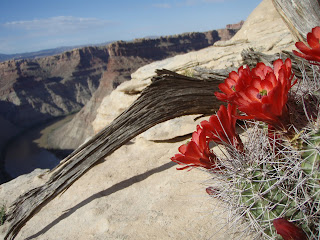Southern Utah conjures up many connotations. Polygamous nutcases, redrock canyons, Ed Abbey, and the Grand Canyon are a few. Within the raw, scorching desert the name Hell’s Backbone implies more sun, ATV’s, and lizards than normal.
No-harm Buddist organic farming wasn‘t immediately on my mind as we stopped in a cloud of dust at Hell‘s Backbone Grill in Boulder, Utah. Not only were traditional prayer flags fluttering on the porch, they have the best tasting food in the entire state of Utah.
Blaker’s Acres, a farm located down the road from the Hell’s Backbone, supplies produce to the restaurant. The manager of Blaker’s Acres took an entire morning to show us around and describe the Buddhist-inspired principles on which the farm operates.
Obviously, plants were killed to be eaten. Otherwise, the farm operated as ‘No Harm’, meaning no pesticides, traps, or implements that would harm the multiple little creatures wanting to feast on the tasty plants. There were a variety of methods used to do this. Specific companion plants, when grown together, provided odors and/or tastes that would repel certain insects. They plant extra produce with the expectation that deer and other fauna will find their way through fences or into cold cellars. In addition, there are strong ties to orchards and ranches around Boulder to supplement the farm’s provisions through a fluid semi-barter economy in the absence of substantial hardware and grocery stores for a hundred miles.
And, should an infestation take a portion of the crop, or seasons change, the chefs at Hell’s Backbone adjust their menu to what is available. I was personally skeptical of the pumpkin and tumbleweed enchaladas, but they were fantastic (it turns out that young green tumbleweeds are quite tender and tasty).
In addition, the restaurant gets its meat from ranchers a couple of miles away. I think that it is fair to say that despite the variety of ideological, theological, and background experiences of the folks involved with Hell’s Backbone, their mutual dependence creates a strong community.












